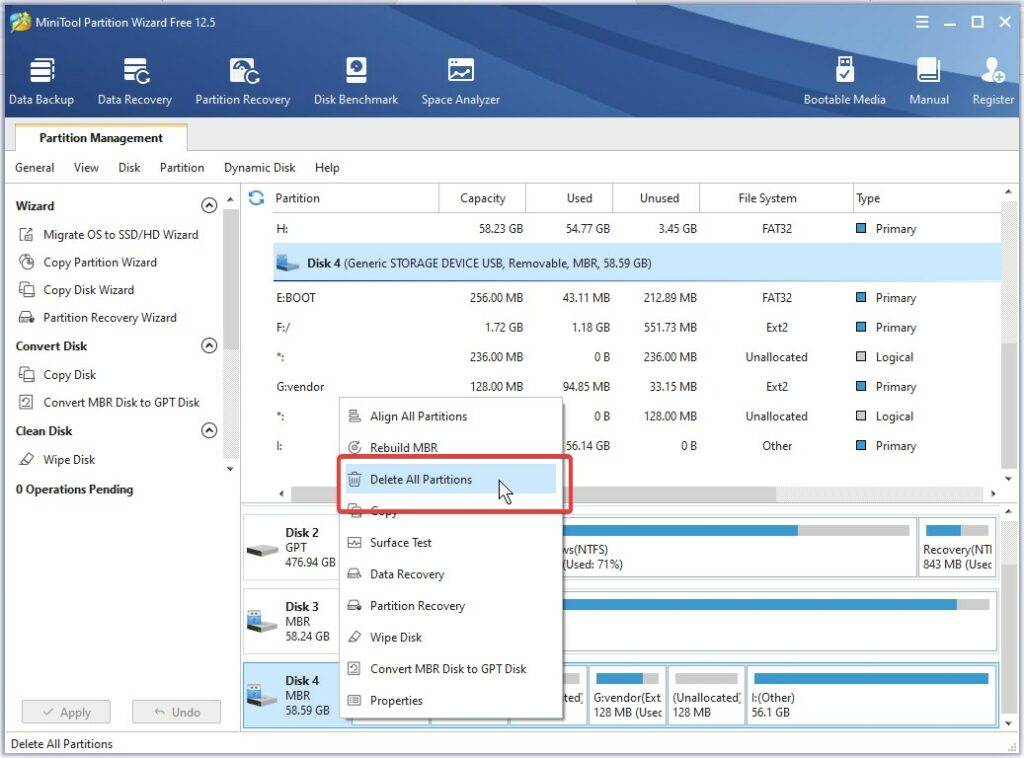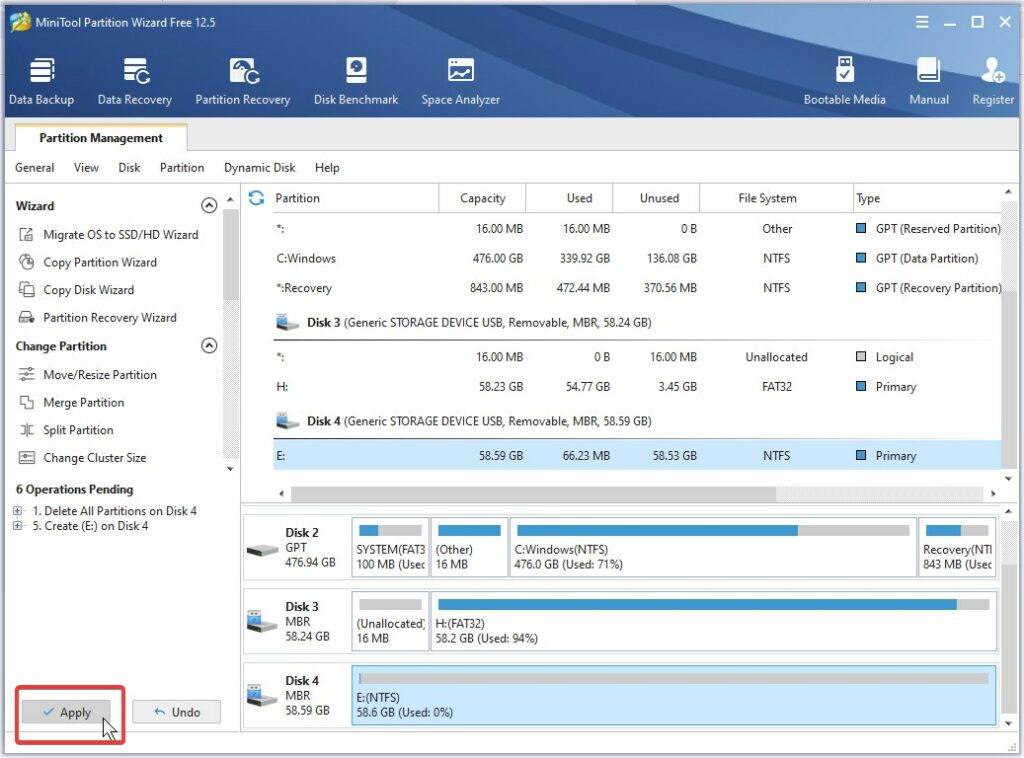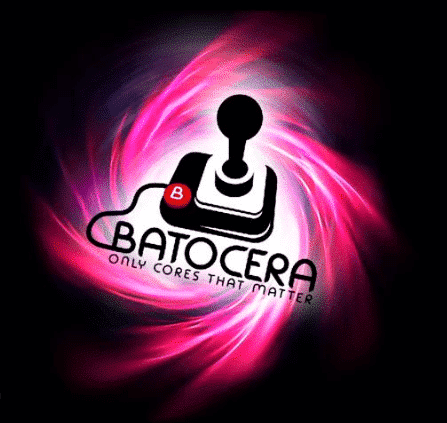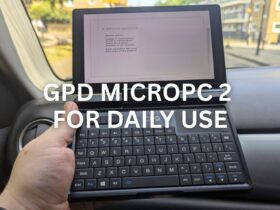Ne paslaptis, kad mes, „DroiX", mėgstame žaidimų nešiojamuosius kompiuterius. Todėl parengėme šį geriausios šiuo metu turimos RG351 pasirinktinės programinės įrangos vadovą, kuris padės jums iš tikrųjų maksimaliai išnaudoti neseniai įsigyto RG351P, RG351M ar panašaus įrenginio galimybes.
Kodėl man reikia RG351 pasirinktinės programinės įrangos?
Dažna rinkoje esančių retro žaidimų delninių kompiuterių problema yra ta, kad juose trūksta programinės įrangos. Galbūt našumas nėra pakankamas arba naudotojo sąsaja yra šiek tiek lėta.
Nors paprastai tai tinka įprastiniam naudojimui, labiau patyrę žaidėjai ir galingi naudotojai norės iš prietaisų išspausti visus galingumus ir funkcijas.
Tai pasiekiama naudojant pasirinktinę programinę įrangą.
Kas yra pasirinktinė programinė įranga?
Pasirinktinė programinė įranga yra pritaikyta programinė įranga, kaip rodo pavadinimas.
Nors taip yra ne visada, dauguma pasirinktinių programinių įrangų atitinka šiuos kriterijus:
- Tai atvirojo kodo programa
- Kiekvienas gali šakotis arba prisidėti prie projekto, kaip tik nori.
- Juos kuria bendruomenė.
- Atsidavę mėgėjai skiria savo laisvalaikį, kad šios operacinės sistemos būtų kuo geresnės.
- Jie yra nemokami!
- Už jų naudojimą nereikia mokėti nė cento!
Jei susiduriate su bet kokia programine įranga, kuri neatitinka šių trijų kriterijų. Patartume būti atsargiems, nes jos gali būti susijusios su įvairiomis problemomis (saugumo, etikos, teisėtumo ir kt.).
Svarbu atkreipti dėmesį į tai, kad tobulos programinės įrangos nėra. Nesvarbu, kokią pasirinksite, yra tikimybė, kad susidursite su klaidomis, ypač jei atsisiųsite beta, RC (Release candidate) arba „naktines" versijas.
Kaip naudotis šiuo vadovu
Šiame vadove apžvelgsime universalius šio skyriaus veiksmus.
Taip įdiegiama visa RG351 šeimos aparatinė programinė įranga.
- Paruoškite „microSD" kortelę
- Atsisiųskite atitinkamą vaizdo failą (tai bus .img, .img.gz ar panašus failas)
- Blykstelėkite jį naudodami pageidaujamą įrankį.
- Įdėkite į RG351 ir leiskite atlikti visas pirmosios įkrovos operacijas (skaidinių išplėtimas ir kt.).
Jei esate susipažinę su „microSD" kortelių mirksėjimo procesu, galite praleisti visą šį skyrių.
Svarbus atsakomybės apribojimas: Nors mes, „DroiX", esame tvirti emuliacijos ir žaidimų išsaugojimo šalininkai. Mes nepritariame neteisėtam dalijimuisi autorių teisėmis apsaugota medžiaga. Šiame vadove nėra jokių vaizdų failų su iš anksto įkeltais žaidimais ar BIOS failais. Juos turėsite parūpinti patys.
Atsisiųsti Įrankiai
Svarbiausias šio vadovo įrankis yra vaizdo blykstės programinė įranga. Ją naudosite norėdami iš tikrųjų perkelti vaizdo failus į „microSD" kortelę.
Apibendrinant galima pasakyti, kad jie naudoja projekto failą (dažnai vadinamą atvaizdu), kad automatiškai sukurtų skirsnius, failus ir aplankus atminties įrenginyje.
Toliau pateiksime keletą pavyzdžių. Visus juos galima naudoti nemokamai:
- „Win32″ disko vaizduoklis
- Rufus (mūsų pageidaujamas pasirinkimas)
- balenaEtcher
- Aviečių pi vaizduoklis
- „ApplePi Baker" (alternatyva „Apple" vartotojams)
Jei susiduriate su bet kokiais suspaustais failais, kurie nėra pagrindinio .zip formato, gali prireikti ir trečiosios šalies archyvų tvarkyklės programinės įrangos. Toliau pateiksime nuorodas į keletą populiarių pasirinkimų:
- „7zip" (mūsų pageidaujamas pasirinkimas)
- „WinZip"(taip pat prieinama „Apple" naudotojams)
- WinRAR
- PeaZip
Išskleiskite suspaustus failus naudodami pasirinktą archyvų tvarkyklės programinę įrangą, tada įrašykite vaizdo failą naudodami vaizdo blykstės programinę įrangą.
Paruoškite SD kortelę
Prieš pradėdami darbą turėsite pasiruošti „microSD" kortelę. „microSD" kortelės dydis priklauso nuo įrenginio, kuriam bus skirta programinė įranga.
- Jei programinė įranga skirta RG351P arba RG351M, patariame naudoti ne mažesnę kaip 32 GB talpos kortelę.
- Taip yra todėl, kad ir žaidimams, ir operacinei sistemai reikės naudoti tą pačią kortelę.
- Jei programinė įranga skirta RG351V arba RG351MP, patariame naudoti ne mažesnę kaip 16 GB talpos kortelę.
- Operacinė sistema ir visi susiję emuliatoriai bus patalpinti į atskirą kortelę, todėl reikės mažiau vietos.
Paruošti „microSD" kortelę nėra taip sudėtinga, kaip gali atrodyti. Tereikia padaryti taip, kad kortelėje būtų vienas skirsnis ir kad kompiuteris galėtų natūraliai pasiekti tą skirsnį.
Nors tiesa, kad atvaizdo blykstės programinė įranga perrašys šį atvaizdą, tai saugiausias būdas užtikrinti, kad kortelė būtų tuščia ir blykstės įrankiai veiktų taip, kaip tikimės.
Manome, kad geriausias būdas paruošti „microSD" kortelę - naudoti skaidinių tvarkytuvę. Mūsų mėgstamiausias yra „MiniTool Partition Wizard", kurį galima atsisiųsti nemokamai.
„microSD" kortelės paruošimas naudojant „MiniTool Partition Wizard




Įrašykite „microSD" kortelę

Paruošę „microSD" kortelę ir atsisiuntę pasirinktą programinę įrangą, turėsite atlikti mirksėjimo operaciją.
Kairėje pusėje esančiame paveikslėlyje naudojame „Rufus" , kad paruoštume „microSD" kortelę. Nes ji yra nemokama, lengva ir paprasta naudoti.
- Įsitikinkite, kad Įrenginys nustatytas į raidę, atitinkančią jūsų microSD.
- Pasirinkite pasirinktos programinės įrangos atvaizdo failą (ir įsitikinkite, kad jis rodomas lange „Boot selection").
- Kai būsite pasiruošę, paspauskite mygtuką Pasirinkti.
Operacija bus atliekama automatiškai. Šio proceso metu neišimkite „microSD" kortelės, priešingu atveju turėsite pradėti iš naujo.
Jis vis dar neveikia!
Jei jums nepavyksta atlikti universalių veiksmų. Galite išbandyti keletą dalykų:
- Įsitikinkite, kad programinės aparatinės įrangos failas atsisiųstas sėkmingai.
- Gali būti, kad atsisiuntimo metu nutrūko interneto ryšys ir failas buvo sugadintas arba netinkamas naudoti.
- Įsitikinkite, kad naudojate tinkamą įrenginio programinės įrangos versiją.
- Skirtingos programinės aparatinės įrangos versijos egzistuoja todėl, kad egzistuoja prietaisai su skirtingais ekranais ir valdymo išdėstymu.
- Mažai tikėtina, kad programinė įranga veiks, jei bus naudojama netinkama įrenginio versija.
- RG351P ir RG351M yra identiški, išskyrus metalinį korpusą ir „Wi-Fi" mikroschemą, todėl jie gali dalytis 99 % esamos programinės įrangos.
- Pabandykite naudoti kitą vaizdo blykstės programinę įrangą
- Buvo pranešta, kad kai kurios programinės aparatinės įrangos nesuderinamos su tam tikrais vaizdais. Pavyzdžiui, balenaEtcher w/ ArkOS
- Pabandykite naudoti kitą „microSD" kortelę
- Gali būti, kad jūsų „microSD" kortelė kaip nors sugedo.
- Tokiu atveju pabandykite naudoti kitą „microSD" kortelę.
- Du patikimi prekių ženklai, kuriuos galite išbandyti, yra „SanDisk" ir „Samsung".
- Pabandykite atsisiųsti iš kitos vietos
- Mes nesame tobuli! Yra tikimybė, kad mūsų įkelti failai gali būti sugadinti, nors ir nedidelė.
- Tokiu atveju pabandykite atsisiųsti naujausias programinės aparatinės įrangos versijas iš atitinkamų svetainių.
- Palikite komentarą ir praneškite mums, kad galėtume ištaisyti sugadintus vaizdus!
Geriausia RG351 pasirinktinė programinė įranga
Toliau pateikiamas visų RG351 šeimos prietaisų svarbių programinių programų, kurios buvo prieinamos skelbimo metu, sąrašas.
351ELEC

351ELEC yra seniausia trečiosios kartos ANBERNIC delniniams kompiuteriams pritaikyta programinė įranga.
Pagrindinis programinės aparatinės įrangos tikslas - sukurti naują „EmuELEC" programinę įrangą ir ją optimizuoti bei pagerinti bendrą naudotojo patirtį.
Galite manyti, kad 351ELEC yra „tai, kas turėjo būti atsargų programinė įranga". Joje yra iš anksto optimizuotų emuliatorių ir patobulinimų rinkinys, taip pat kiti į vartotoją orientuoti patobulinimai.
Jei tik pradedate domėtis pasirinktine programine įranga, labai rekomenduojame rinktis 351ELEC.
Atsisiuntimo nuorodos
351ELEC galima atsisiųsti iš oficialios 351ELEC github, taip pat yra gražiai suprojektuota svetainė, kurią taip pat galima naršyti. Tačiau taip pat pateikėme naujausios tuo metu turimos stabilios programinės aparatinės įrangos veidrodines versijas (išskyrus RG351MP, kuris šiuo metu neturi stabilios versijos).
- 351ELEC, skirtas RG351P/M (2021/06/03)
- 351ELEC, skirtas RG351V (2021/06/03)
- 351ELEC, skirtas RG351MP [Beta] (2021/11/06)
ARKOS

„ArkOS" yra „Ubuntu" pagrįstas „RG351″ šeimos prietaisams skirtas „RG351″ programinės įrangos platinimas. Iš pradžių ji buvo pradėta kaip TheRA portas, bet vėliau išsišakojo į savarankišką programinę įrangą.
„ArkOS" tikslas - sukurti optimizuotą, lengvai pritaikomą ir pritaikomą retro žaidimų platformą.
Ji naudoja tą pačią „Ubuntu" / „Linux" operacinę sistemą, kuria pagrįsta „TheRA". Taigi kūrėjams suteikiama daugiau lankstumo pridedant ir atnaujinant sistemos funkcijas.
„ArkOS" taip pat turi galimybę natūraliai paleisti transliacijos programas, pvz., „Moonlight". Tai leidžia „techniškai" žaisti žaidimus, kurių paprastai nebūtų galima žaisti. Išlyga - nedidelis įvesties vėlavimas.
Papildoma maloni funkcija yra OTA atnaujinimai, leidžiantys gauti naujas programinės įrangos versijas neišimant „microSD" kortelės.
„ArkOS" reikalauja šiek tiek daugiau triukų nei 351ELEC, todėl ji yra geras pasirinkimas labiau patyrusiems naudotojams, kurie tikrai nori išjudinti savo delninę retro konsolę iki jos ribų.
Atsisiuntimo nuorodos
„ArkOS" galite atsisiųsti tiesiai iš projekto wiki svetainės.
- „ArkOS", skirta RG351P/M (2021/05/01)
- RG351V arkOS (2021/09/26)
- „ArkOS", skirta RG351MP (2021/11/05)
TheRA (TheRetroArena)

TheRA (TheRetroArena) yra RG351 pasirinktinė programinė įranga, sukurta naudojant „Ubunutu/Linux". Kūrėjams ir kitiems entuziastams suteikiama prieiga prie daug galingesnių vietinių kūrimo įrankių, kurie palengvina prietaiso funkcijų pridėjimą.
Kaip ir daugumoje kitų populiarių firmware'ų, „TheRA" turi daug nedidelių patobulinimų, kurie pagerina bendrą prietaiso našumą ir funkcionalumą. Tačiau pagrindinis „TheRA" privalumas neabejotinai yra absoliučiai didžiulis platformų, kurias ji palaiko, skaičius.
Nors „TheRA" nėra tokia optimizuota kaip kai kurios kitos programinės įrangos, ji suteikia galimybę žaisti žaidimus iš daugiau nei šimto (100) skirtingų platformų.
Atsisiuntimo nuorodos
TheRA galite atsisiųsti iš kūrėjų komandos svetainės. Čia taip pat galite rasti naujausių versijų, kurios buvo prieinamos publikavimo metu, veidrodžius.
- RG351P (RC 3)
- RG351V (RC 1.3)
- TheRA, skirta RG351MP (Beta 2.4)
Batocera
„Batocera" (taip pat žinoma kaip Batocera.linux) - tai ilgai kurtas lengvas linux distributyvas, skirtas mažos galios įrenginiams paversti visaverčiais žaidimų kompiuteriais.
„Batocera" programinė įranga buvo viena iš pirmųjų, sukurtų RG351, ir tapo geresnio „N64″ emuliavimo platformoje pradininke. Tačiau nuo to laiko ir kitos programinės aparatinės įrangos pritaikė tą patį emuliatorių. Taigi „Batocera" neturi daug ko, kas ją iš tiesų „išskirtų".
Nėra daug ką pasakyti apie šią programinę įrangą, išskyrus tai, kad ji yra gerai pagaminta, linux pagrįsta programinė įranga, skirta RG351P. Ją tikrai verta patikrinti, kad pamatytumėte, ar jos siūlomos konfigūracijos ir funkcijos jums vertos.

Tačiau vienas ypatingas „Batocera" trūkumas yra tas, kad paveikslėlyje nėra „lengvai pasiekiamo" žaidimų skyrelio. Norint pridėti žaidimų taip, kaip įprastai tai darytumėte kitose sistemose, reikės kokios nors priemonės, pavyzdžiui, " Paragon Software" programos " Linux File Systems for Windows".
Atsisiuntimo nuorodos
„Batocera" galite atsisiųsti tiesiai iš kūrėjų komandos svetainės. Deja, šiuo metu palaikomas tik originalus RG351P (o kartu ir RG351M).
- RG351P batocera (2021/09/30)
Lakka

„Lakka" šiuo metu yra viena iš neaiškių RG351 pasirinktinės programinės įrangos parinkčių.
Joje atsisakyta „EmulationStation" priedėlio, o vietoj jo naudojama tik „RetroArch" programinė įranga. Taip pašalinamos visos nereikalingos pridėtinės išlaidos ir sistema gali išnaudoti visas galimas galios galimybes.
Be to, ją labai lengva atnaujinti, nes įdiegtos OTA naujinimo funkcijos.
Tačiau mokymosi naudotis „Lakka" kreivė yra statesnė nei kitų firmware, nes nėra supaprastintos patogios vartotojo sąsajos „EmulationStation" vartotojo sąsaja.
Be to, jis prastesnis, kai naudojamas platformose, kuriose geriau veikia atskiri emuliatoriai, pavyzdžiui, „Nintendo DS".
Apskritai, ši programinė įranga yra graži alternatyva tam, kas jau egzistuoja, bet galiausiai nereikalinga RG351, nebent esate „RetroArch" puristas. Nes dėl pridėtinių išlaidų trūkumo ji neleidžia atkurti nieko, ko negali atkurti kita programinė įranga.
Atsisiuntimo nuorodos
„Lakka" turi gražiai prižiūrimą svetainę, kurioje lengvai žingsnis po žingsnio rasite ir įdiegsite jums tinkamą versiją. Toliau taip pat pateikėme keletą nuorodų į veidrodinius serverius:
- „Lakka", skirta RG351P/M (2021/11/08)
- „Lakka", skirta RG351V (2021/11/08)
- „Lakka", skirta RG351MP (2021/11/08)
351Droid

351Droid yra RG351 pasirinktinė programinė įranga, kuria bandoma įdiegti „LineageOS" į RG351 retro delninių kompiuterių šeimą.
Nepaisant to, kad tai buvo eksperimentinis bandymas, pasiektas įspūdingas funkcionalumo lygis.
Naudojant „Android" sistemą suteikiama prieiga prie daugelio jau parengtų ir gana optimizuotų emuliatorių. Teoriškai„LineageOS" taip pat turėtų suteikti prieigą prie žaidimų transliavimo programų („Moonlight" ir kt.) ir pačių „Android" žaidimų.
„351Droid", nors ir šaunus, šiuo metu vis dar yra labiau koncepcijos įrodymas. Ir apskritai vis dar turi nemažai klaidų. Tačiau manome, kad ją verta patikrinti vien dėl „wow" veiksnio!
Atsisiuntimo nuorodos
Naujausią „351Droid" versiją galite atsisiųsti iš šio „Google" disko aplanko.
Trumpai buvo sukurta projekto interneto svetainė, tačiau šiuo metu ji nebeprižiūrima. Šiuo metu bet kokias diskusijas apie šią programinę įrangą galima rasti " Retro Handhelds" diskusijoje.
Toliau taip pat pateikiame veidrodines nuorodas:
- 351Droid, skirtas RG351P/M (2021/07/31)
- 351Droid, skirtas RG351V (2021/09/18)
- 351Droid, skirtas RG351MP (2021/09/18)
Santrauka
Tikimės, kad šis vadovas jums buvo naudingas! Jei norite įsigyti ANBERNIC delninį kompiuterį, peržiūrėkite mūsų platų retro delninių kompiuterių pasirinkimą svetainėje droix.co.uk.
Jei turite kokių nors atsiliepimų ir (arba) problemų dėl atsisiuntimo nuorodų, nedvejodami palikite komentarą!










